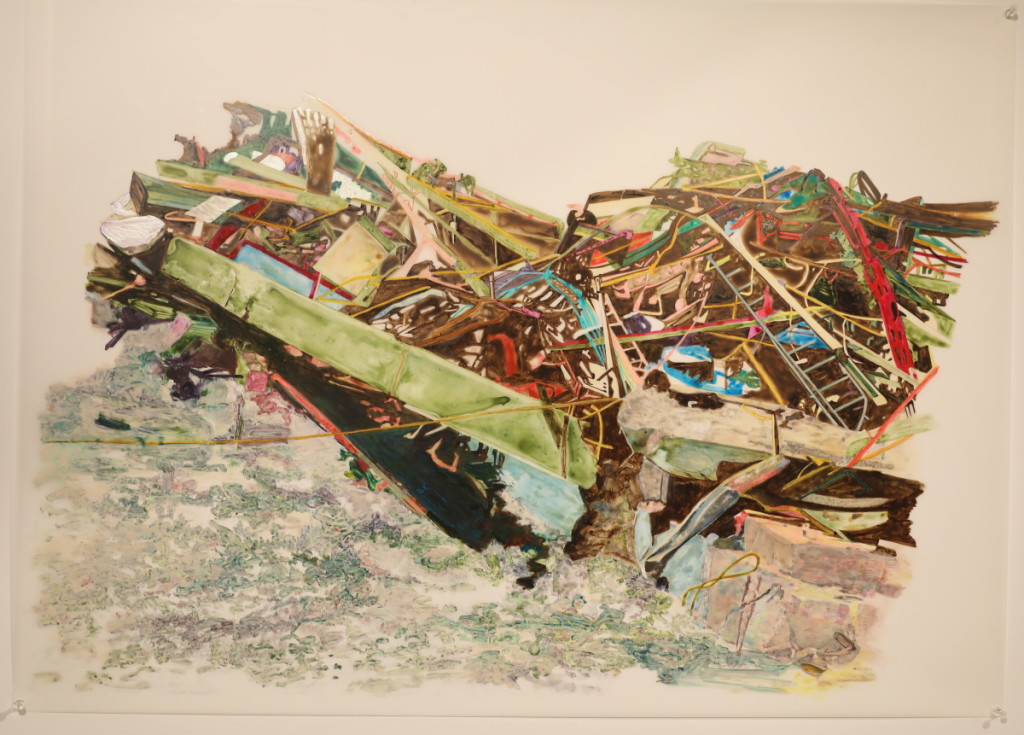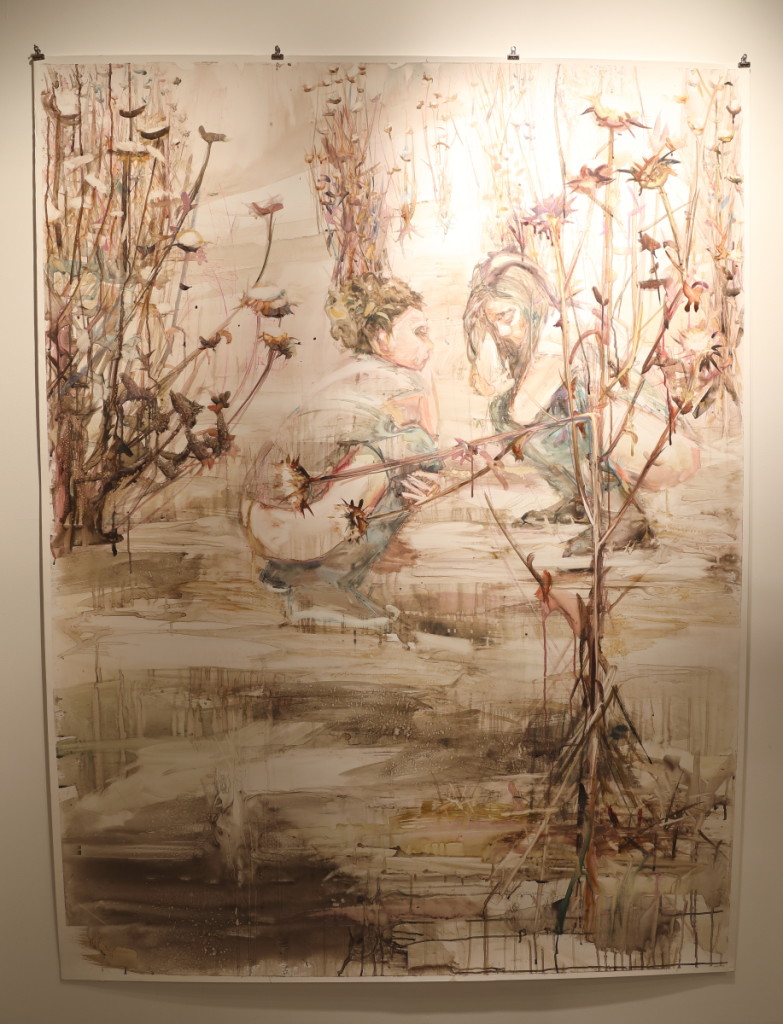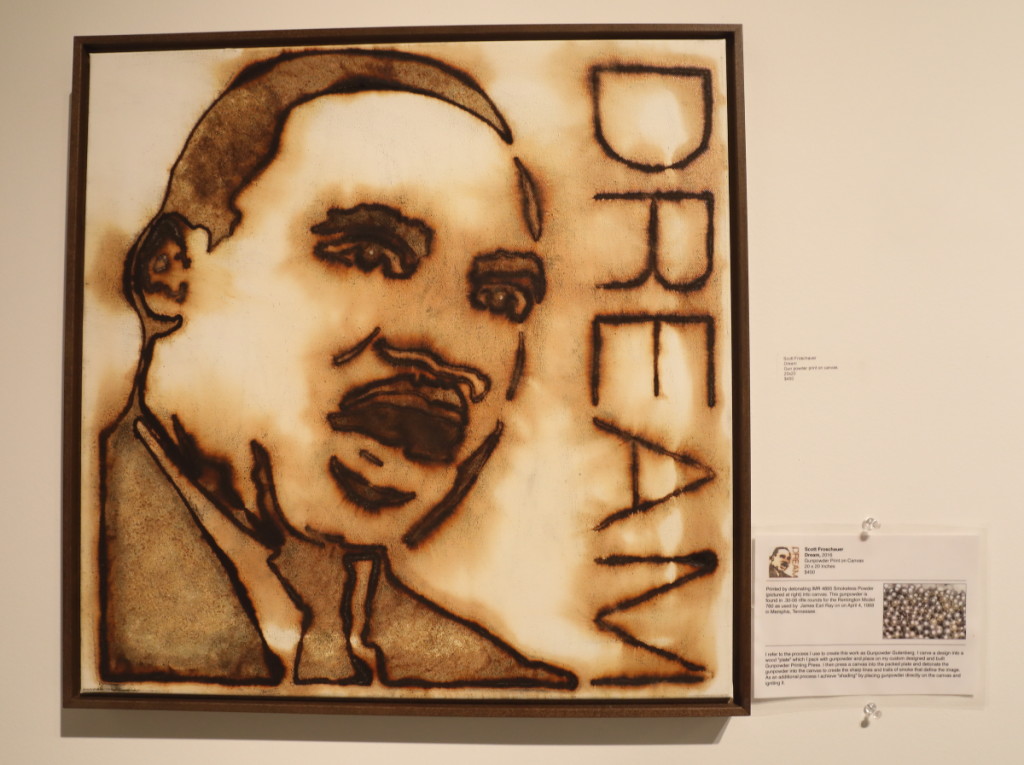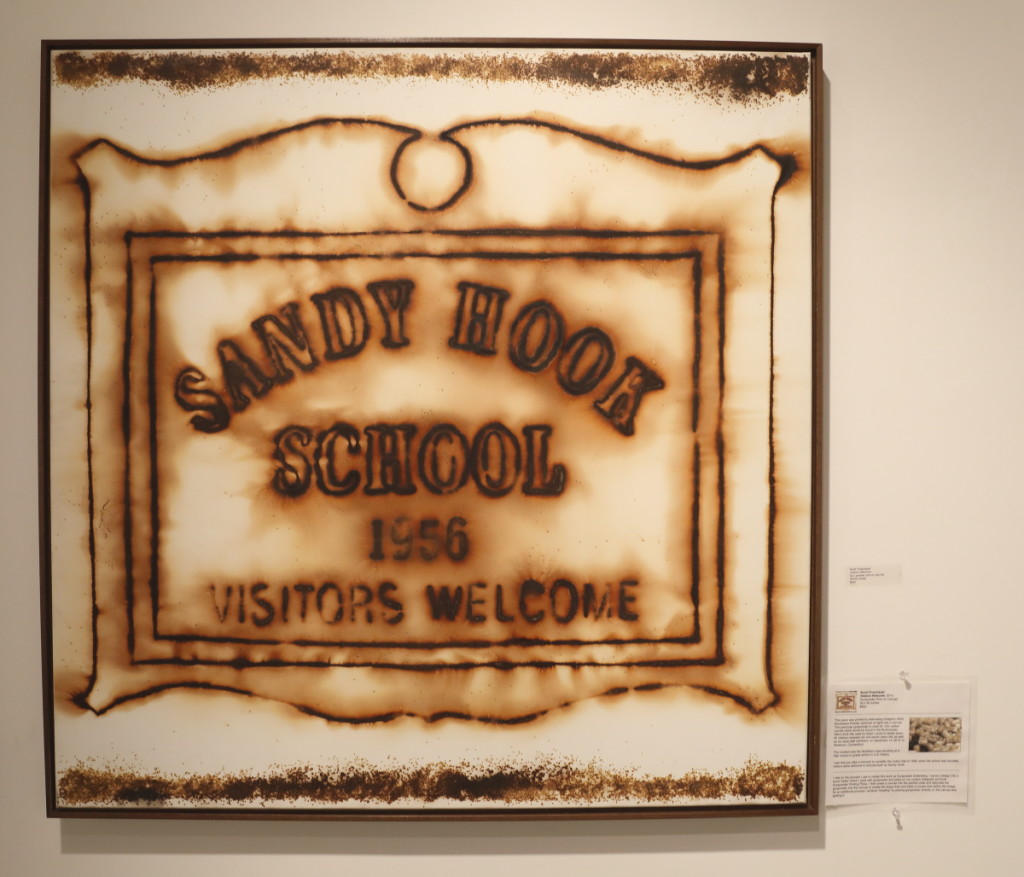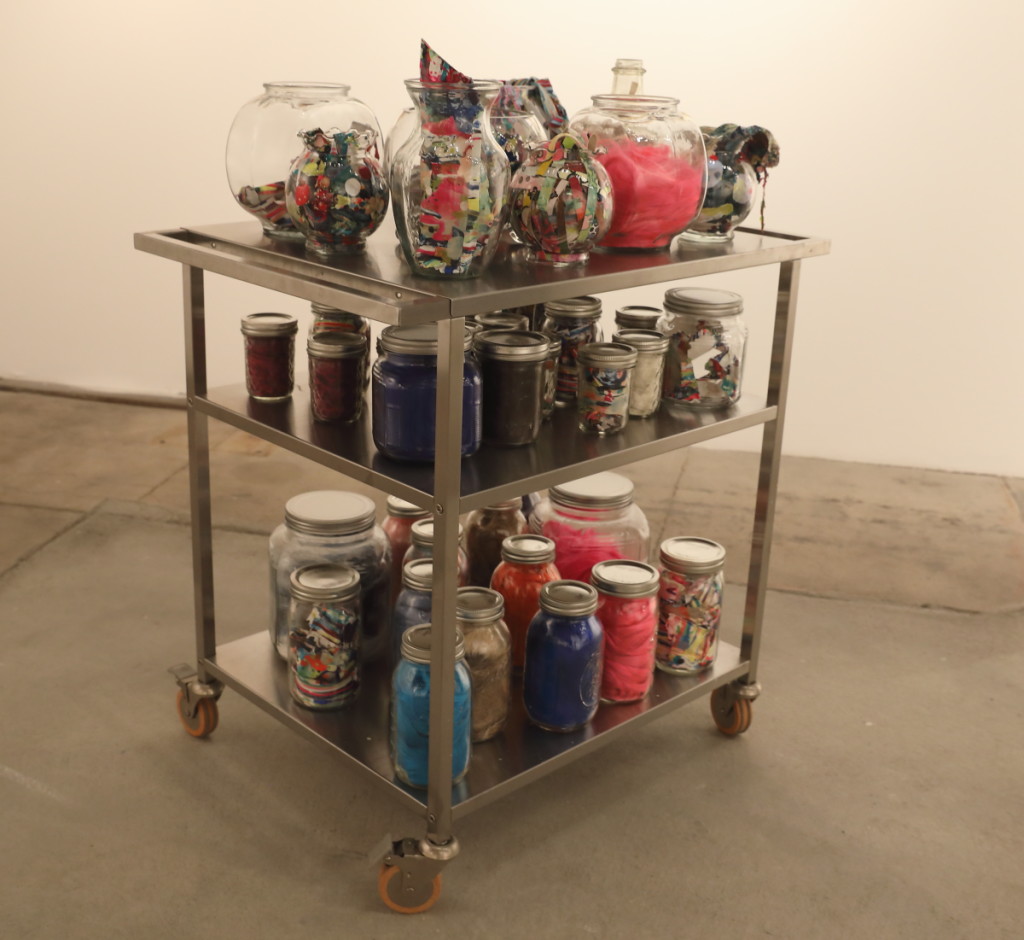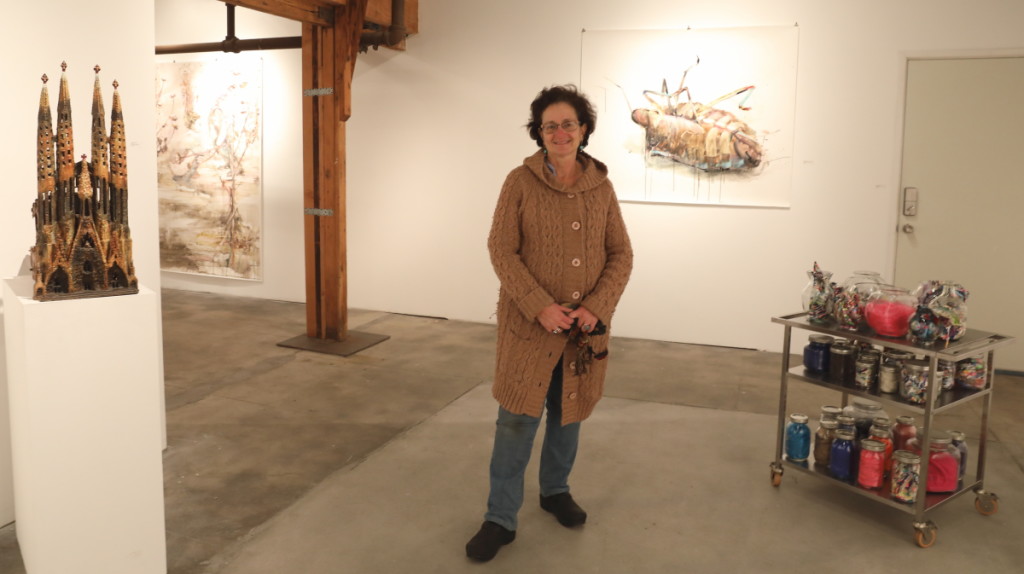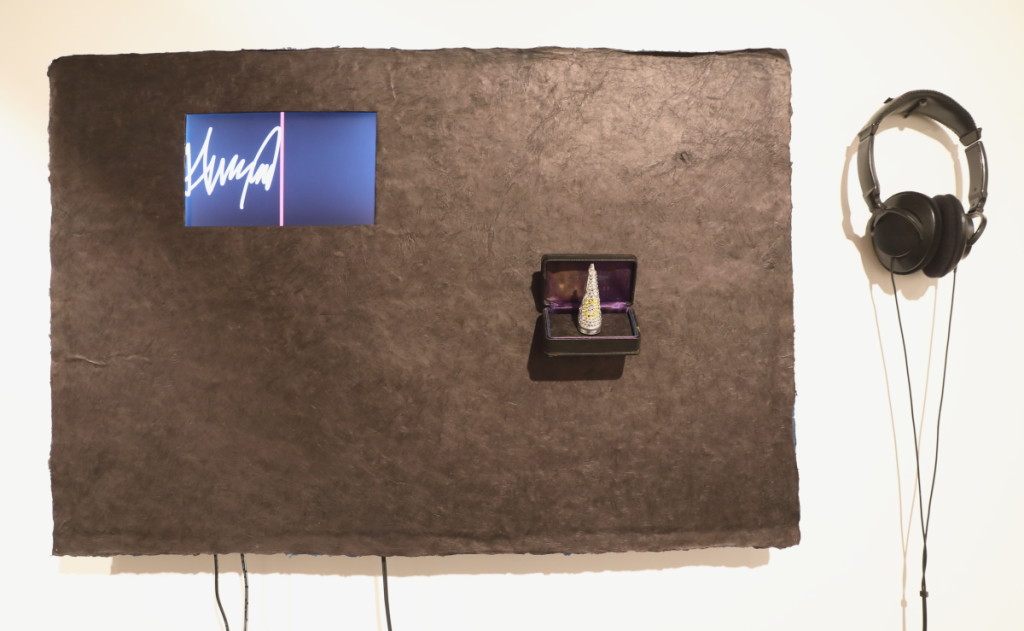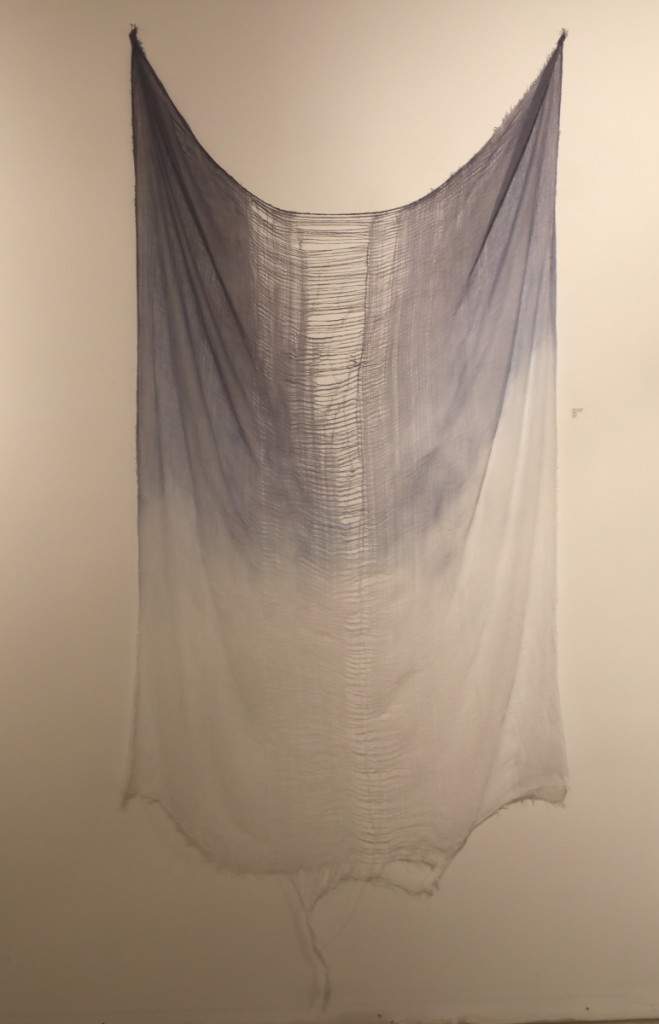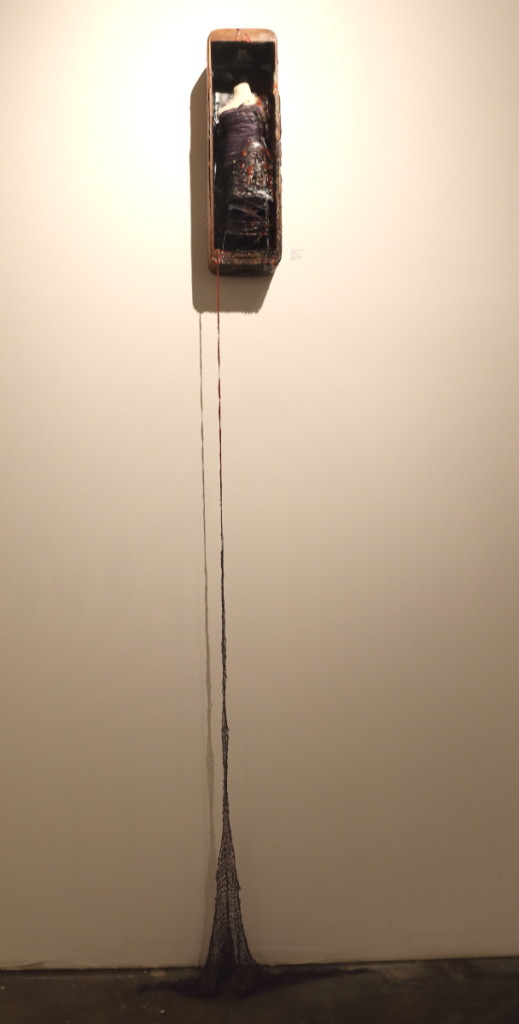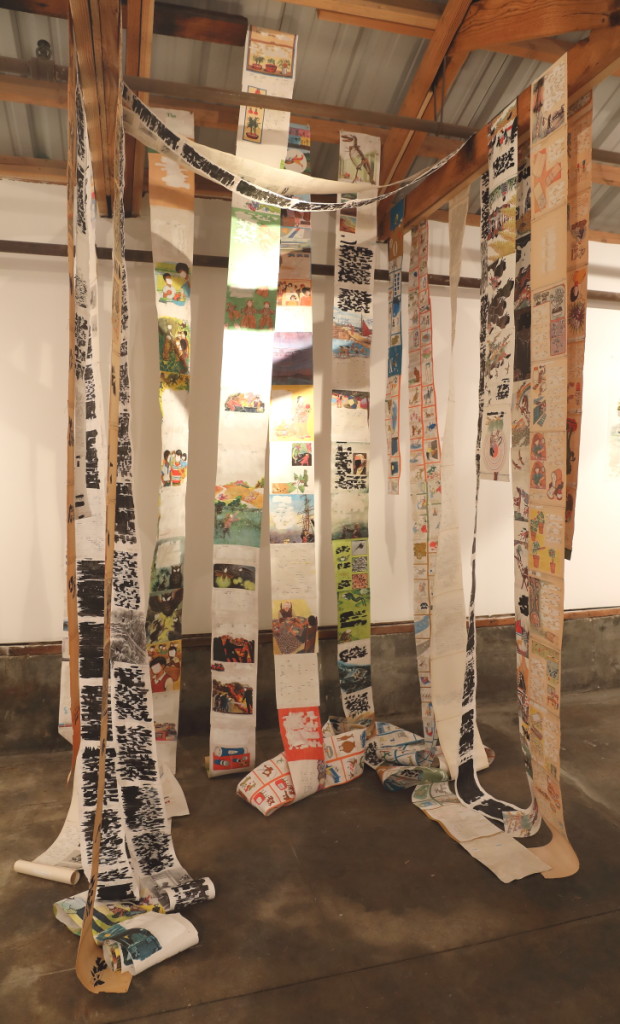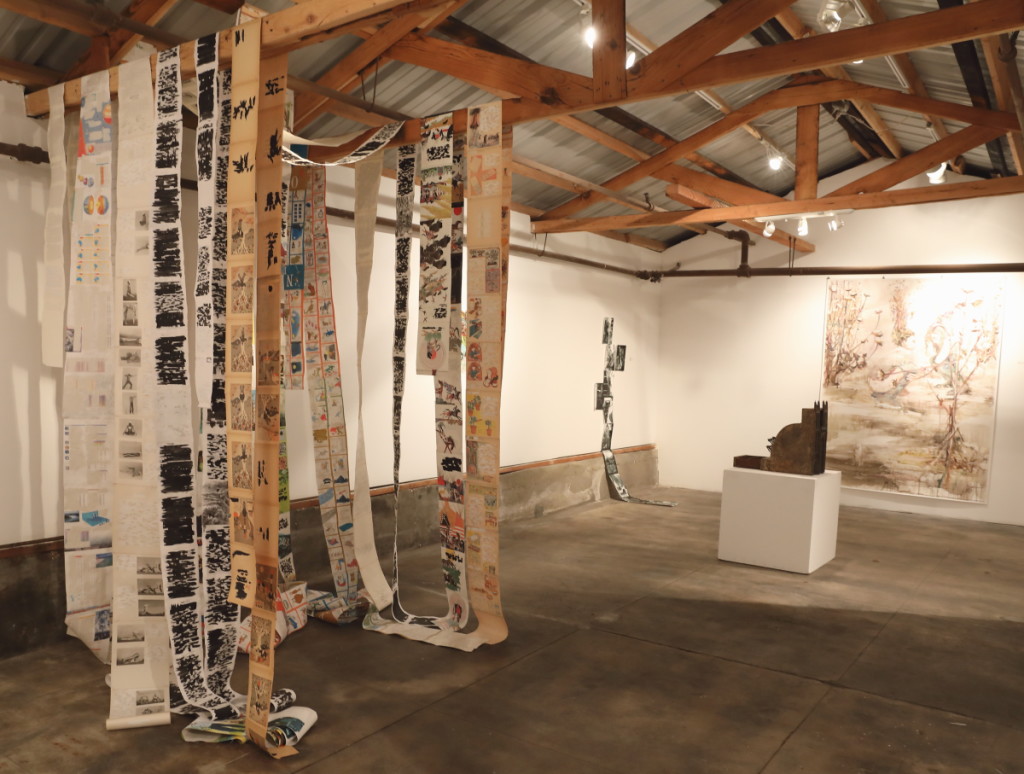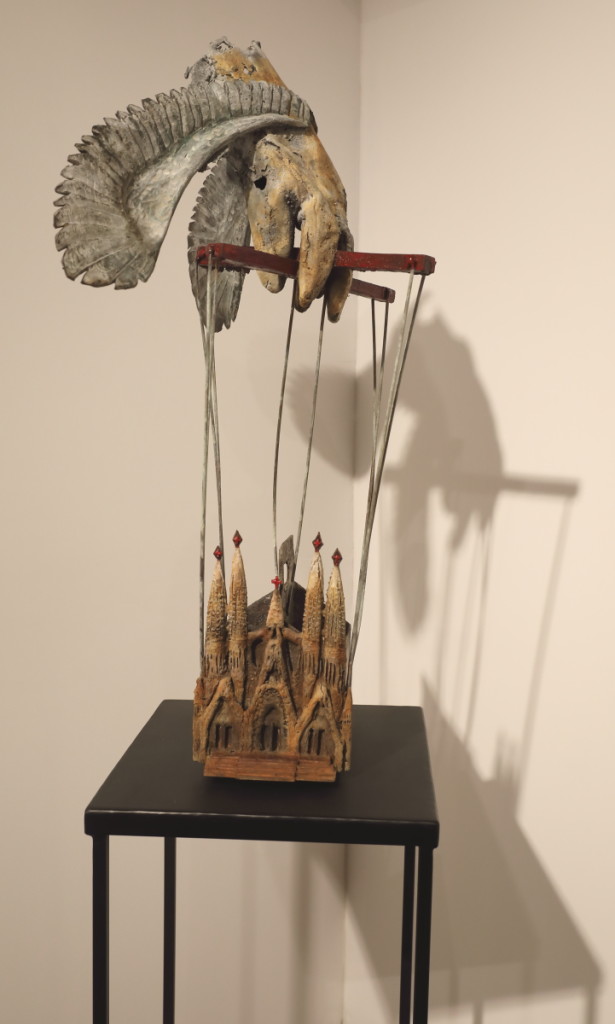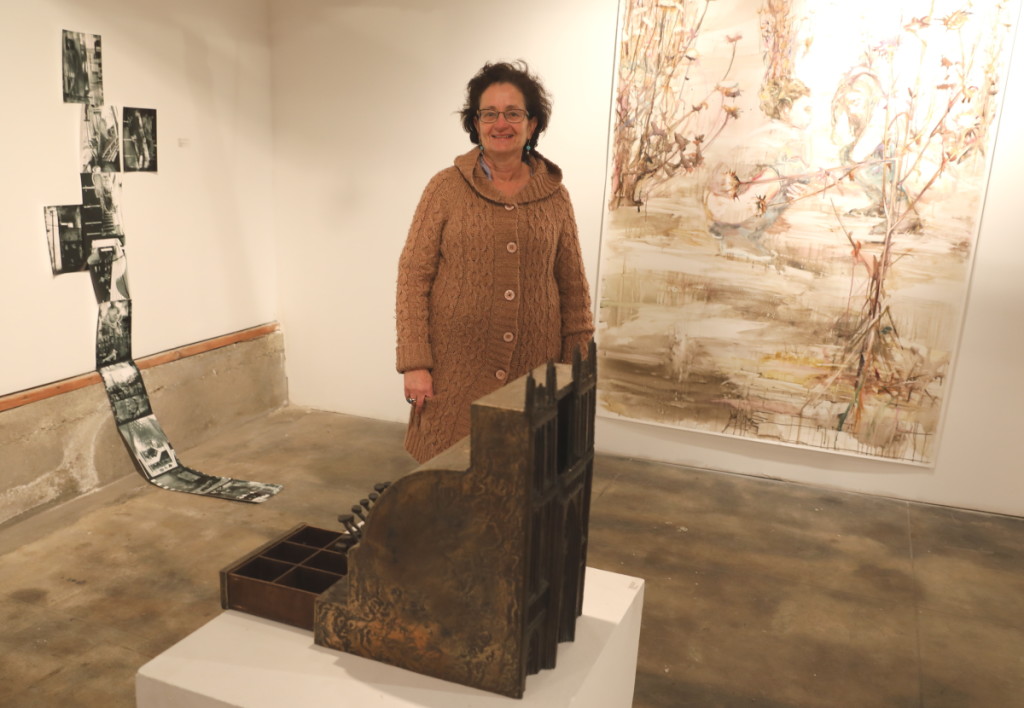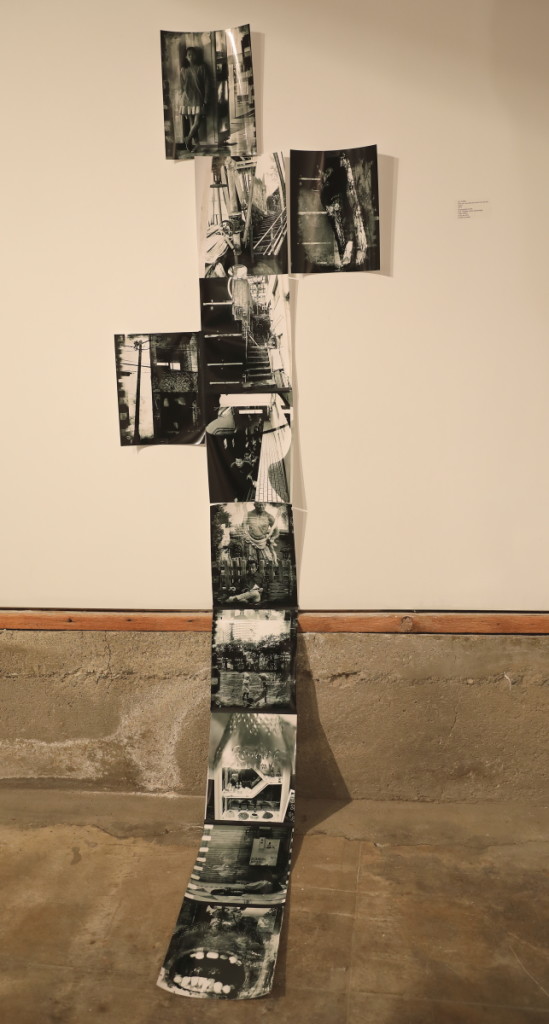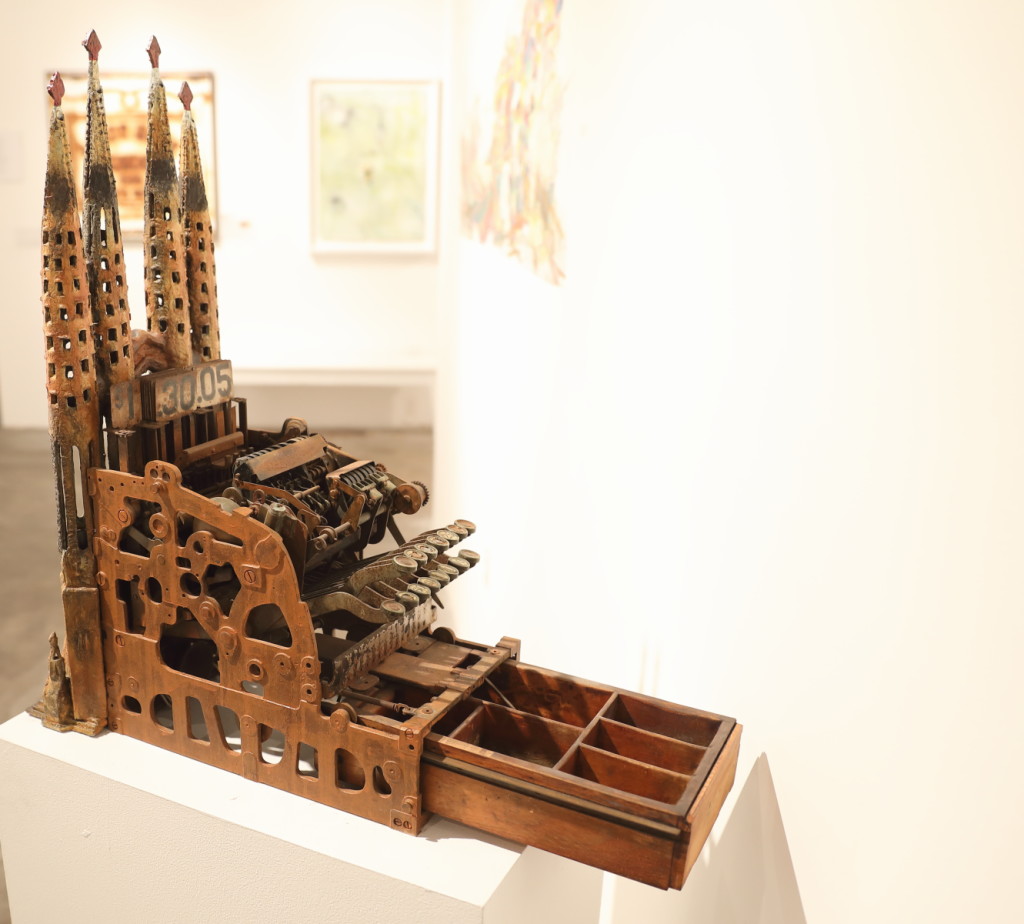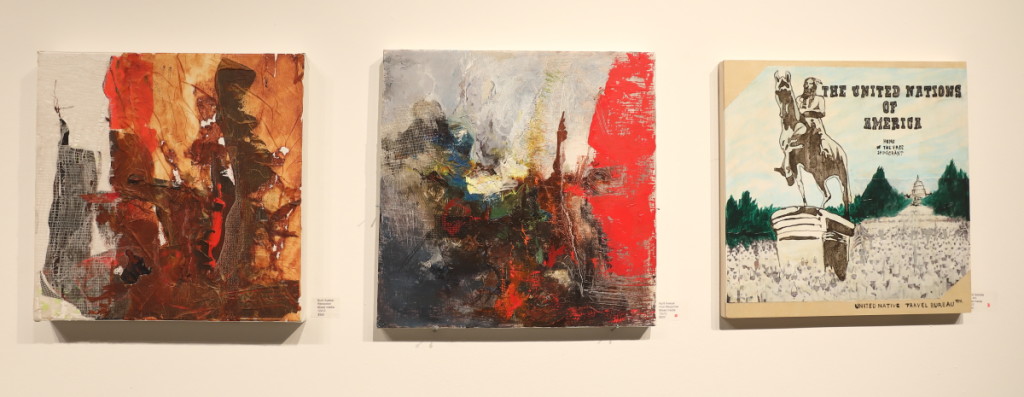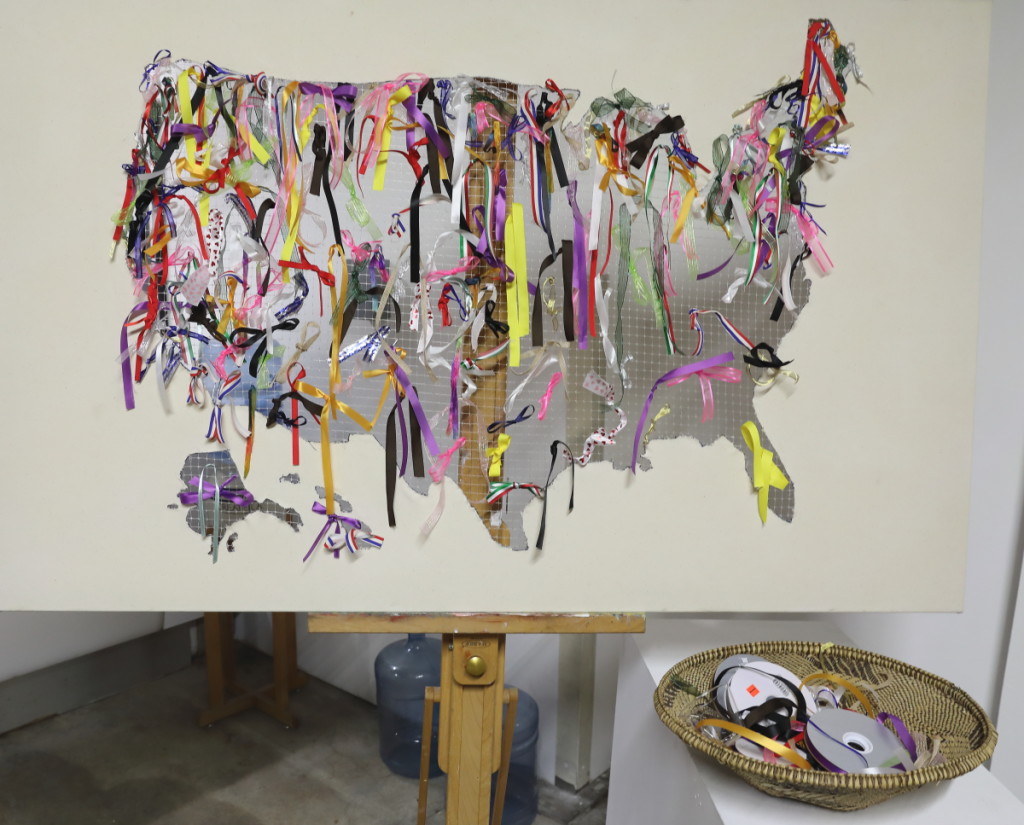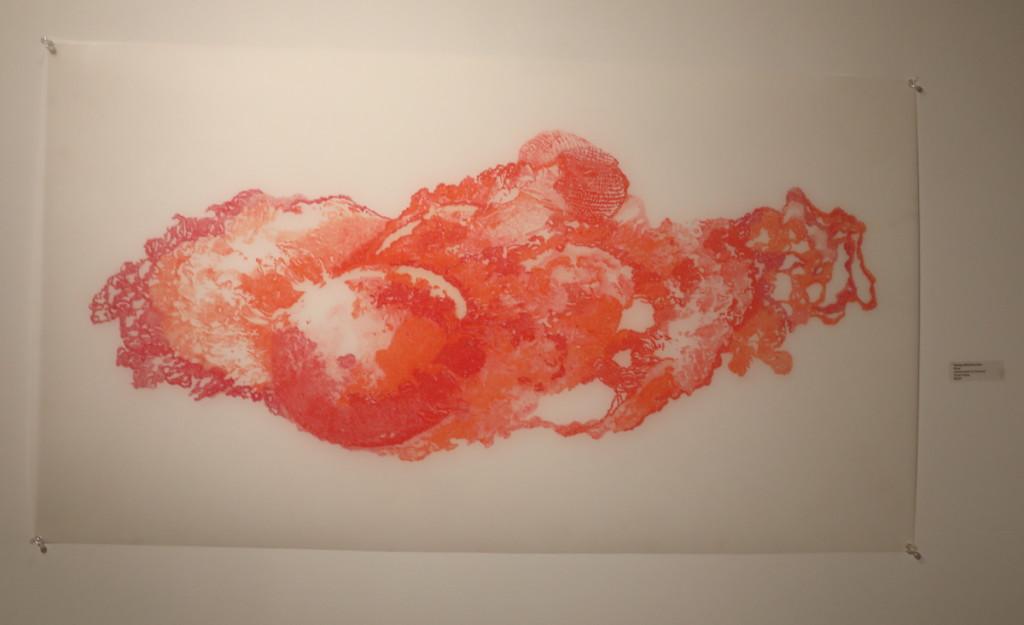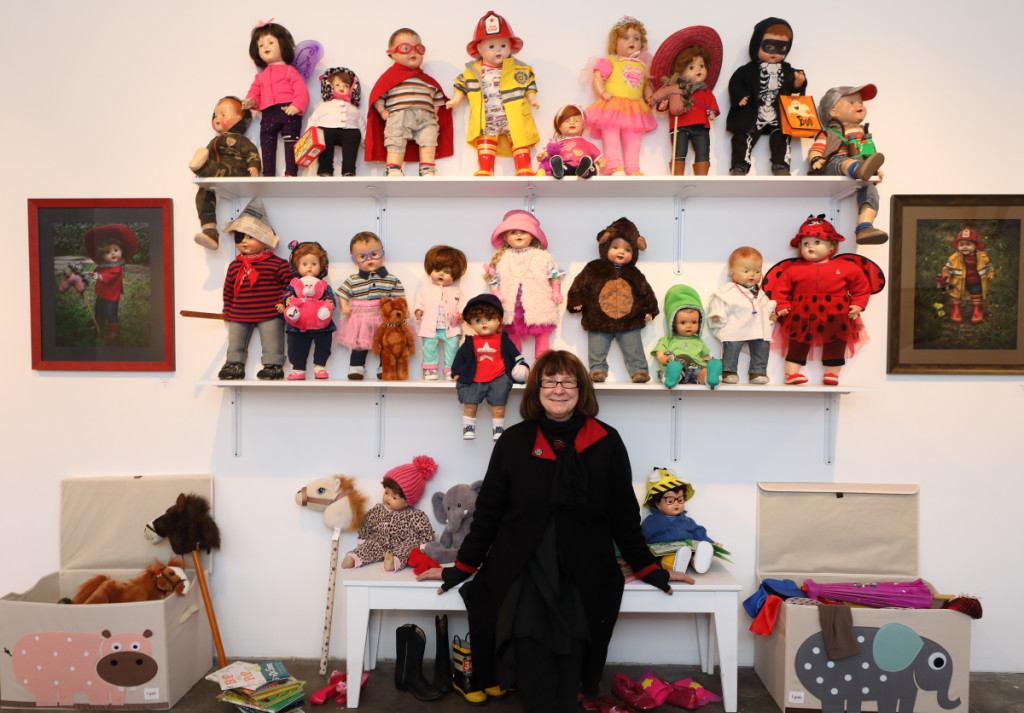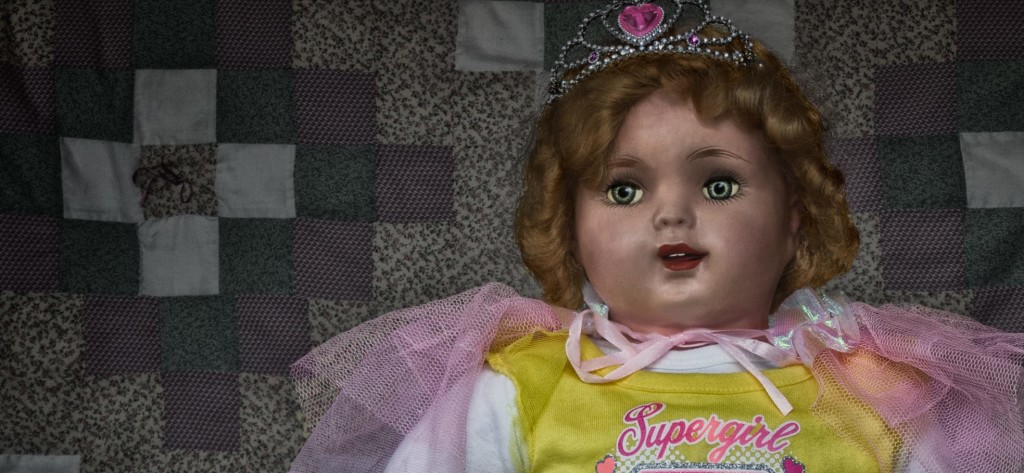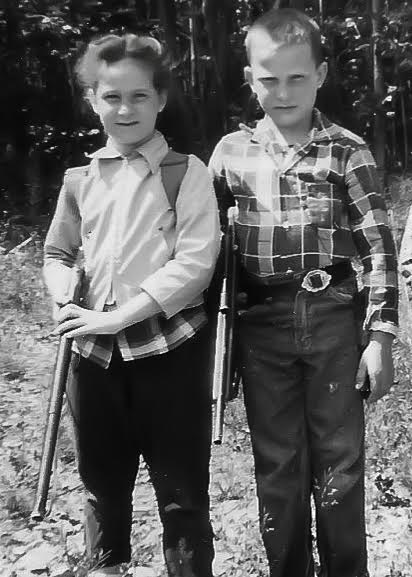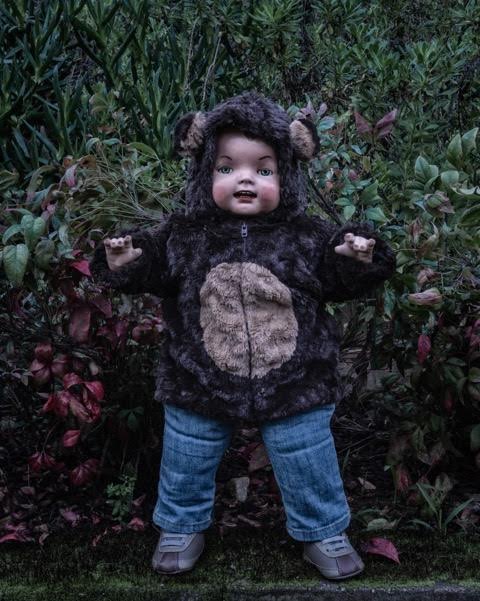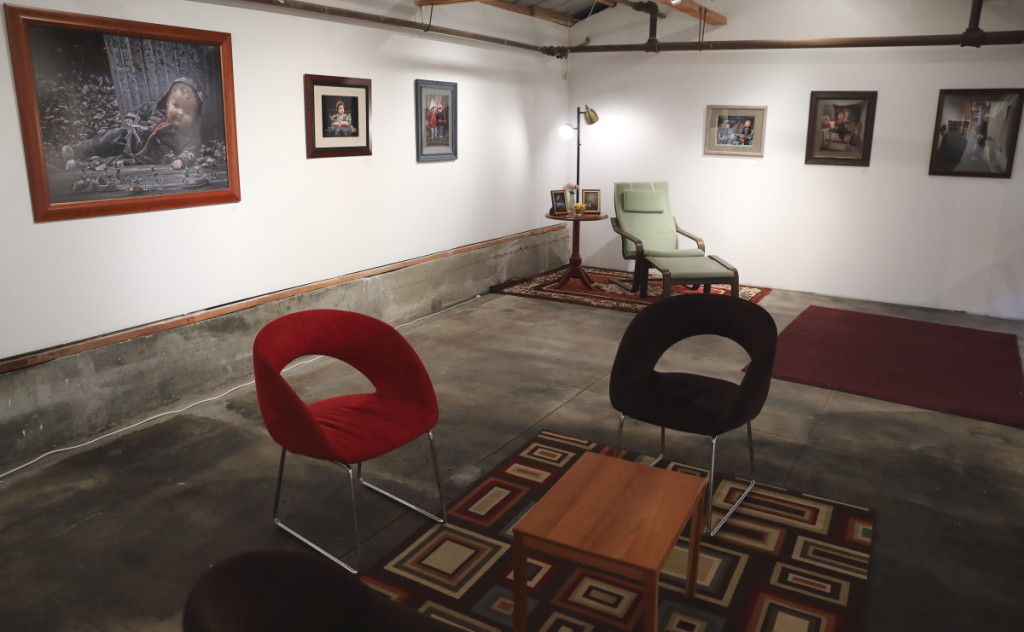Climate change has made the idea of leaving Eden, our planet earth, all too real a prospect. What happens to the flora and fauna, the animal life – including the human animal – if we allow the continued environmental apocalypse to continue? Art has often stood in the forefront of calling attention to and presenting an action call for salient issues. It has awakened viewers to the necessity for change, to the beauty of the world around us, and provided a sense of hope for the future. So, too, does Leaving Eden, coming February 11th to Keystone Gallery in Lincoln Heights.
The collaborative exhibition between Samuelle Richardson and Snezana Saraswati Petrovic will fill viewers with the joy of Richardson’s expressive textile animals and Petrovic’s immersive flowers, trees, and glistening waters. Gallery visitors will move – as the flourishing creatures and landscape in this art world do – from their lush, green, and blue Eden to a dry, desert world, where all life must struggle for food and water — with hope that they can return to Eden again.
Divided into two rooms: an Edenic garden and a desert filled with Joshua Trees and cacti, the two artists have combined their gifts to create a vision to cherish and consider, one that expresses the beauty of nature and our vital need to protect it.
Richardson describes the journey viewers will take as a circular one, revealing what it is like to live in and leave our Eden and then try to create a more “pristine world…a circular journey back to square one [where] flora and fauna prevail.”
Petrovic says “As an immigrant, I am in search for an idyllic version of the home that I have lost due to war. My realization was that the real home for all of us is the Earth, and for me, it represents Eden, the most diverse and idyllic garden of all.” To prepare for the exhibition, she began to draw studies of plants in Huntington Gardens, Joshua Tree, the Salton Sea, and Oahu, Hawaii. She adds that mythologically the “idea of Eden is connected to the human need for a place of immortality, an ideal place for human habitation with lush beauty, and it exists not just in Christianity but… is [expressed as] Jannāt ʿAdni in the Quran or [as] Pure Lands in Buddhism…in all of these gardens, there are always references to infinity and transformation.”
Both artists express that sense of transformation in their work. For Richardson, “New work begins with a mental picture of the subject, then I research pictures that express the type of character I want. I build up each figure in stages to achieve gesture and expression, working with the pictures as a bridge to discovery.” Here you will see lions, birds, wild dogs, and even a few humans created by the artist.
Petrovic was in part inspired to create her mixed media sculptures of zip ties and dry natural plants from references to the Byzantine traditional blue depictions of Eden, with video installation elements culled from her Oahu and Big Island residencies, while the desert installation was inspired by the Salton Sea and it’s “white shore with fish skeletons turned into mineral dust,” and uses a white, orange, and blue palette – skeletons, sun and sky – in her work in the Desert room.
Visitors to the exhibition will also be able to interact with some of Petrovic’s work through AR and the use of iPads in the exhibition or through their own smart phones. The AR depictions reveal dry dirt transforming with a live, growing seedling, what she calls a “symbolic shift of the wheel of fortune from global catastrophe to renewal and healing.”
Richardson and Petrovic greatly enjoyed working together on this project. “It’s uncanny how much Snezana and I have in common regarding our worldview and how we have advanced as artists. Our collaboration also included outings to Huntington Gardens to observe and compare our impressions on nature,” Richardson says.
Petrovic relates that “We would immerse ourselves in different parts of the gardens, and have conversations related to the nature of different environments, desert versus rain forest. We were looking at the shapes and relationships between flora and negative spaces…we shared some images of our previous works and investigated the works of Henri Rousseau and Hieronymus Bosch.”
She adds that “Sam’s dogs, tigers and birds are bringing my environments and sculptural installations to life. I cannot wait to see all of them being brought together into this unique project!”
Richardson brought to the exhibition new ideas inspired from a recent residency in Rome, and a fascination with the Etruscan culture, which Petrovic also finds compelling. “We both agree that our creations are coming from the ‘same world’ of connectedness to feminine history as well as our own past design experiences. Sam’s fashion industry experiences brought a deep understanding of patterning, fabric and thread use into her sculptures. My interest in the relationship between space versus object is from professional experience as a production/set and costume designer,” Petrovic relates.
Richardson has added to her wire, foam, and fabric sculptures – with the “fabric covering my work emulating glaze on ceramic” with a new artistic expression – in woodwork. “I am building shapes that resemble boats, joining and cutting pine lumber [for the exhibition.]”
Petrovic has included her latest experiments in organic bioplastic, also using dry plants and palm leaves in the exhibition. She says taht she has long been driven toward reimagining the future, beginning with a residency at the Pomona Art Colony under Judy Chicago examining the “current and future scientific predicament of global ecological catastrophe…if we do not protect our home, there will be nowhere to go. Leaving Eden was a natural progression of my exploration of gardens and homes within the looming danger of climate change and plastic overuse. It added another layer to my imagined world of the future. I see this whole experience as a love poem to the Earth, our own impermanence and existence that might have a chance for a replay.”
Richardson, Petrovic, and I, as conceptualizing curator, all encourage you to visit our Eden and its aftermath and look toward that replay, one which our world all too dearly needs.
Leaving Eden holds its opening Saturday, February 11th from 6 to 9 p.m.; an artist’s talk and closing event will be held Saturday, February 25th at 4 p.m. Additional gallery hours Thursday-Sunday by appointment.
Keystone Gallery is located at 338 S Avenue 16, Los Angeles, CA 90031
- Genie Davis; photos by Genie Davis and Samuelle Richardson






















